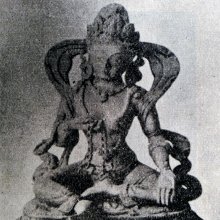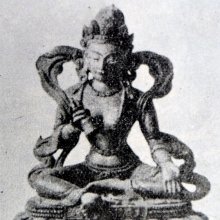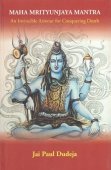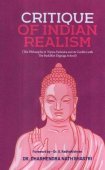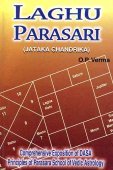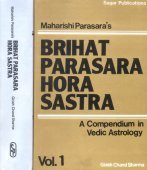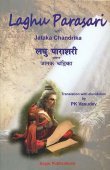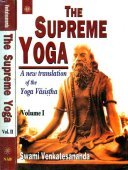Logic, Logical: 3 definitions
Introduction:
Logic means something in Buddhism, Pali, Hinduism, Sanskrit. If you want to know the exact meaning, history, etymology or English translation of this term then check out the descriptions on this page. Add your comment or reference to a book if you want to contribute to this summary article.
Images (photo gallery)
In Hinduism
Yoga (school of philosophy)
Source: ORA: Amanaska (king of all yogas): A Critical Edition and Annotated Translation by Jason Birch(The doctrine of) Logic is denoted by the Sanskrit term Tarka, according to the Amanaska Yoga treatise dealing with meditation, absorption, yogic powers and liberation.—Accordingly, as Īśvara says to Vāmadeva: “[...] Not by studying the doctrines of scriptural exegesis, logic (tarka), planets and mathematics, nor by the Vedas, Upaniṣads, Dharmaśāstras [and the like]; not even by lexicons nor metre, grammar, poetry nor rhetoric; the sage's attainment of the highest reality is gained only from the oral teachings of his own Guru. [...]”.

Yoga is originally considered a branch of Hindu philosophy (astika), but both ancient and modern Yoga combine the physical, mental and spiritual. Yoga teaches various physical techniques also known as āsanas (postures), used for various purposes (eg., meditation, contemplation, relaxation).
In Buddhism
Tibetan Buddhism (Vajrayana or tantric Buddhism)
Source: Google Books: The Crystal Mirror of Philosophical SystemsLogic refers to one of the “Ten Sciences” (in Tibetan: rig gnas bcu) which were taught by Śākyaśrī to Sakya Pandita (Sapan).—[...] At the age of twenty-three, Sakya Pandita (1182–1251) met the great Kashmiri pandit Śākyaśrī. With the great pandit and his disciples, Saṅghaśrī, Sugataśrī, and Dānaśīla, he trained completely in the ten sciences [e.g., logic or valid cognition]. At the age of twenty-seven, he took full ordination from the great Kashmiri pandit.
Source: Rigpa Shedra: WikiLogic as one of the “Five Major Sciences” (Tibetan: rig gnas chen po lnga) forms part of the “Ten Sciences” (Tibetan: rig gnas bcu), or fields of knowledge. The term “craftsmanship” is known in Sanskrit as Hetu and in Tibetan as gtan tshigs.

Tibetan Buddhism includes schools such as Nyingma, Kadampa, Kagyu and Gelug. Their primary canon of literature is divided in two broad categories: The Kangyur, which consists of Buddha’s words, and the Tengyur, which includes commentaries from various sources. Esotericism and tantra techniques (vajrayāna) are collected indepently.
See also (Relevant definitions)
Starts with: Logical therapy.
Query error!
Full-text (+899): Anvikshiki, Tarka, Tarkashastra, Nyaya, Hetu, Tarkavidya, Tarkika, Anvaya, Nyayin, Niruha, Avayava, Yukti, Vicarasthala, Pratarkana, Anumanokti, Vyuha, Pratijnavirodha, Phakkika, Yauktika, Badhita.
Relevant text
Search found 365 books and stories containing Logic, Logical; (plurals include: Logics, Logicals). You can also click to the full overview containing English textual excerpts. Below are direct links for the most relevant articles:
Brihad Bhagavatamrita (commentary) (by Śrī Śrīmad Bhaktivedānta Nārāyana Gosvāmī Mahārāja)
Verse 2.2.222 < [Chapter 2 - Jñāna (knowledge)]
Verse 2.3.43 < [Chapter 3 - Bhajana (loving service)]
Verse 2.2.196 < [Chapter 2 - Jñāna (knowledge)]
Nyaya-Vaisheshika (critical and historical study) (by Aruna Rani)
4. Authors of Nyaya (h): Gangesa Upadhyaya (12th century) < [Chapter 2 - Historical Study of Nyaya system]
4. Authors of Nyaya (h): Gangesa Upadhyaya (12th century) < [Chapter 2 - Historical Study of Nyaya system]
4. Authors of Nyaya (f): Bhasarvajna < [Chapter 2 - Historical Study of Nyaya system]
Journal of Ayurveda and Integrative Medicine
Life Profile of Vaidyan Puthiyedathu Raman Menon < [Volume 15 (issue 1), Jan-Feb 2024]
The transformations of disease in expert and lay medical cultures < [Volume 2 (issue 1), Jan-Mar 2011]
Mimansa < [Volume 2 (issue 1), Jan-Mar 2011]
The validity of Anumana (inference) in Nyaya system (by Babu C. D)
Chapter 4.3.1 - Navya Nyaya (a): Tattva-Cintamani of Gangesopadhyaya
Chapter 1 - Nyaya system (Introduction)
Influence of Nyaya-Vaisesika on Ayurveda (by Sindhu K. K.)
5. Verbal testimony (sabda) according to the Nyaya School < [Chapter 3 - Scientific heritage of Nyaya-Vaisesika and Ayurveda: An apraisal]
4. Atmavidya (the science of Soul) < [Chapter 1 - Origin and Development of Nyaya-Vaisesika and Ayurveda]
9. The periods and development of inter-related Nyaya-Vaisesika < [Chapter 1 - Origin and Development of Nyaya-Vaisesika and Ayurveda]
Archives of Social Sciences of Religions
Ernst Cassirer and Claude Lévi-Strauss: Two Approaches to Myth Study < [Volume 41 (1976)]
Hermann Cohen: Integrating Science and Religion < [Volume 60-1 (1985)]
Sociology of Islam: Religious Phenomena and Social Logics < [Volume 110 (2000)]
Related products
(+6 more products available)
